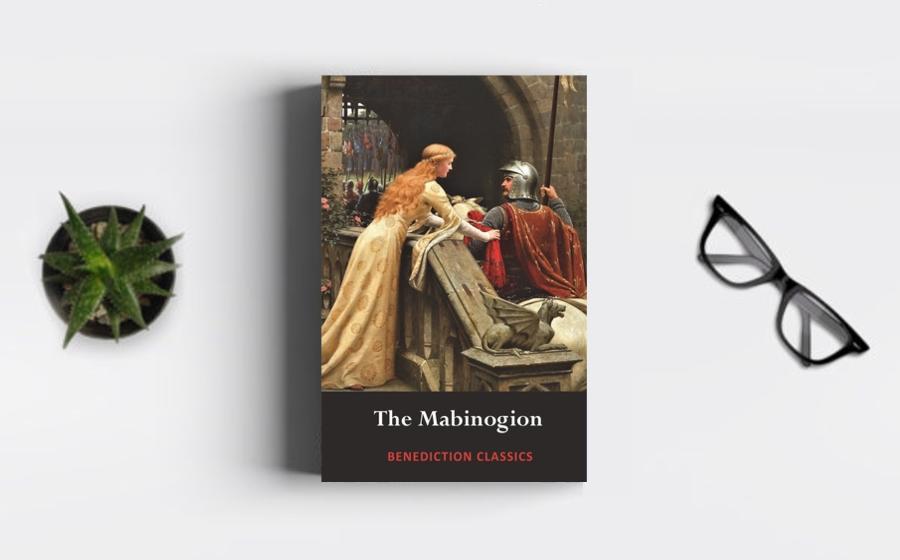"The Mabinogion," a collection of Welsh prose tales
that dates back to the 12th and 13th centuries, stands
as a time-tested epic that captures the essence of Welsh
mythology, heroic narratives, and the enduring spirit of
a distinct cultural identity. Comprising a series of
interconnected stories, the Mabinogion weaves together
magical landscapes, legendary characters, and moral
lessons that transcend the boundaries of time and
culture. Rooted in the rich oral traditions of medieval
Wales, this epic has maintained its relevance through
the ages, offering readers a glimpse into a unique
tapestry of mythology, chivalry, and cultural
resilience.
The Mabinogion consists of four
branches, each containing a set of tales that explore
the exploits of heroes, the mysteries of magic, and the
complex relationships between mortal and divine
entities. The First Branch introduces Pwyll, Prince of
Dyfed, and the enchanting Rhiannon, setting the stage
for themes of love, honor, and the interconnectedness of
the human and supernatural realms. The Second Branch
continues the narrative with the tragic tale of Branwen,
exploring themes of war, betrayal, and the consequences
of conflict. The Third Branch delves into the adventures
of Manawydan, the son of Llyr, and his encounters with
magical forces, while the Fourth Branch centers around
the exploits of the heroes Culhwch and Olwen, showcasing
the significance of quests, loyalty, and destiny.
One of the enduring qualities that make "The
Mabinogion" a time-tested epic is its rootedness in
Welsh mythology and folklore. The tales draw upon the
rich oral traditions of medieval Wales, preserving and
transmitting the cultural heritage of the Welsh people.
The Mabinogion serves as a repository of myths, legends,
and historical narratives that reflect the beliefs,
values, and worldview of the Welsh community during a
pivotal period in its history. As an epic grounded in
the specificities of Welsh culture, it has transcended
its medieval origins to become a cultural touchstone for
subsequent generations, fostering a sense of continuity
and identity among the Welsh people.
The epic's
exploration of magical and supernatural elements
contributes to its timelessness. The Mabinogion
introduces readers to a fantastical realm where
shape-shifting, enchantments, and otherworldly beings
are woven seamlessly into the fabric of everyday life.
These magical elements serve as conduits for exploring
universal themes such as the blurred boundaries between
reality and fantasy, the consequences of tampering with
the supernatural, and the enduring fascination with the
mysterious forces that shape human destiny. The
intertwining of the magical and mundane elevates "The
Mabinogion" beyond a mere collection of folktales,
transforming it into an enduring exploration of the
human imagination.
A crucial aspect of the
Mabinogion's time-tested nature lies in its portrayal of
heroic characters who navigate a world fraught with
challenges, quests, and moral dilemmas. The heroes of
the Mabinogion, including Pwyll, Bran, Manawydan,
Culhwch, and others, embody the ideals of Welsh chivalry
and serve as exemplars of courage, honor, and loyalty.
Their journeys and exploits resonate with the timeless
archetype of the hero's quest, drawing readers into
narratives that transcend cultural and temporal
boundaries. The epic's heroes, despite facing
fantastical challenges, grapple with dilemmas that
mirror the complexities of the human condition, making
their stories universally relatable.
The
Mabinogion's exploration of the relationships between
mortals and divine beings adds another layer to its
enduring appeal. The tales feature encounters with
deities, magical creatures, and otherworldly realms,
blurring the lines between the earthly and the divine.
These interactions delve into themes of fate, destiny,
and the consequences of challenging the supernatural
order. The gods and goddesses of the Mabinogion, such as
Rhiannon and Bran, become archetypal figures
representing aspects of nature, fertility, and the
cosmic forces that shape the world. This divine
dimension adds depth to the epic, inviting readers to
contemplate the mysteries of existence and the eternal
interplay between the mortal and the divine.
The
Mabinogion's exploration of love and relationships
further contributes to its time-tested nature. The tales
present nuanced depictions of romantic entanglements,
familial bonds, and friendships, portraying the
complexities of human connections. Whether through the
tragic love of Branwen and Matholwch or the triumphant
union of Culhwch and Olwen, the epic delves into the
multifaceted nature of love, loyalty, and the impact of
relationships on individual destinies. These themes
resonate across cultures and eras, offering readers a
timeless reflection on the enduring power of human
connections.
The oral tradition from which the
Mabinogion emerged plays a pivotal role in its
time-tested nature. The tales were initially passed down
through generations via spoken word, creating a dynamic
and evolving narrative tradition. This oral transmission
allowed for adaptations, reinterpretations, and
embellishments, ensuring that the stories remained
relevant and engaging to different audiences over time.
The Mabinogion's transition from oral tradition to
written text reflects its adaptability and resilience,
as it continues to captivate readers in various forms
and formats.
The Mabinogion's influence on later
literature, including the works of medieval and modern
writers, underscores its enduring legacy. Authors such
as Geoffrey Chaucer, Alfred Lord Tennyson, and
contemporary fantasy writers have drawn inspiration from
the themes, characters, and narrative structures of the
Mabinogion. The epic's impact extends beyond literature,
influencing art, music, and popular culture, reinforcing
its status as a foundational work that has left an
indelible mark on the cultural landscape.
"The Mabinogion" stands as a time-tested epic that transcends its medieval Welsh origins to become a universal exploration of mythology, heroism, and cultural resilience. Rooted in the rich oral traditions of medieval Wales, the Mabinogion weaves together magical landscapes, heroic tales, and moral lessons that continue to resonate with readers across cultures and epochs. Its grounding in Welsh mythology, exploration of the magical and heroic, portrayal of relationships.






